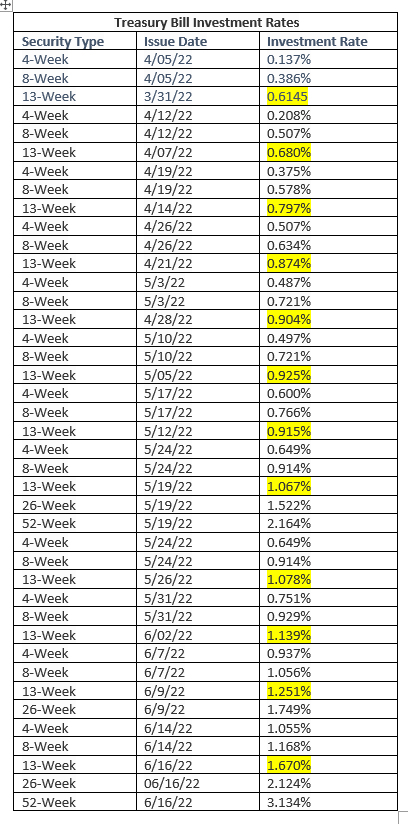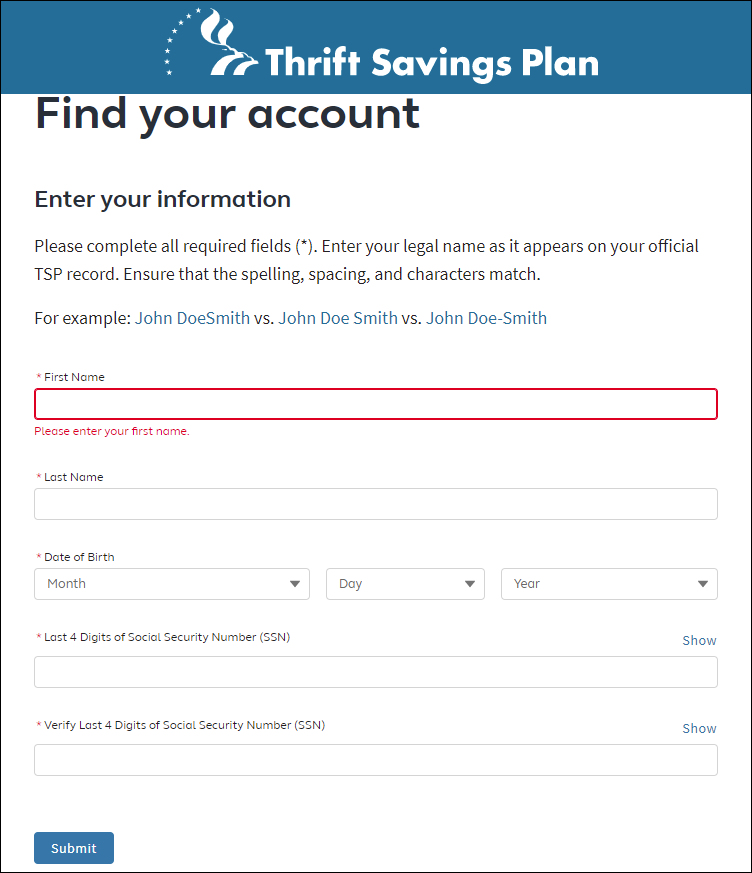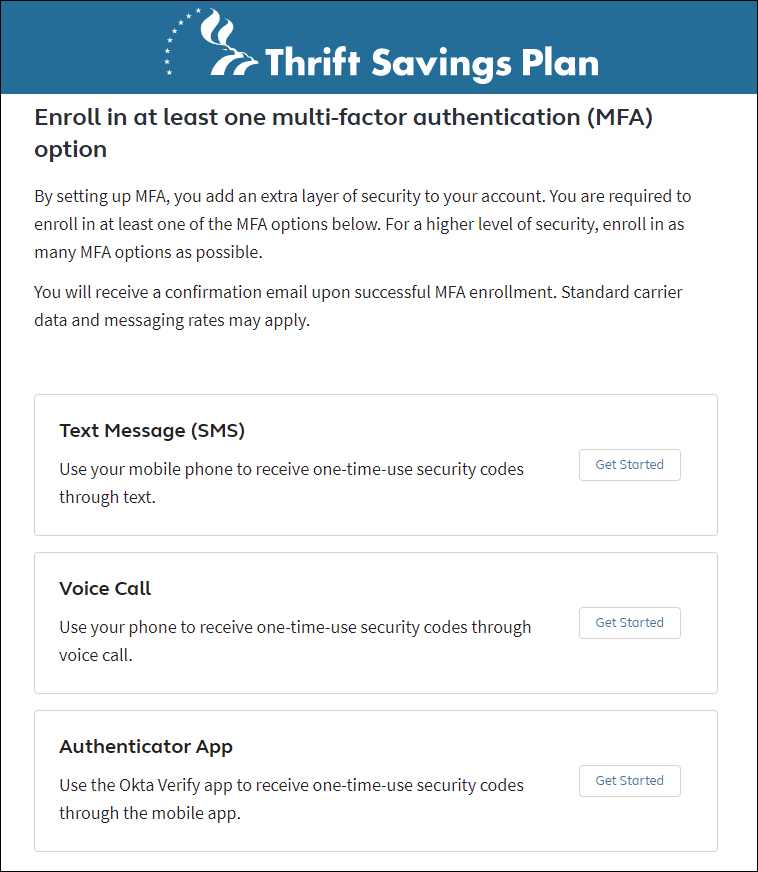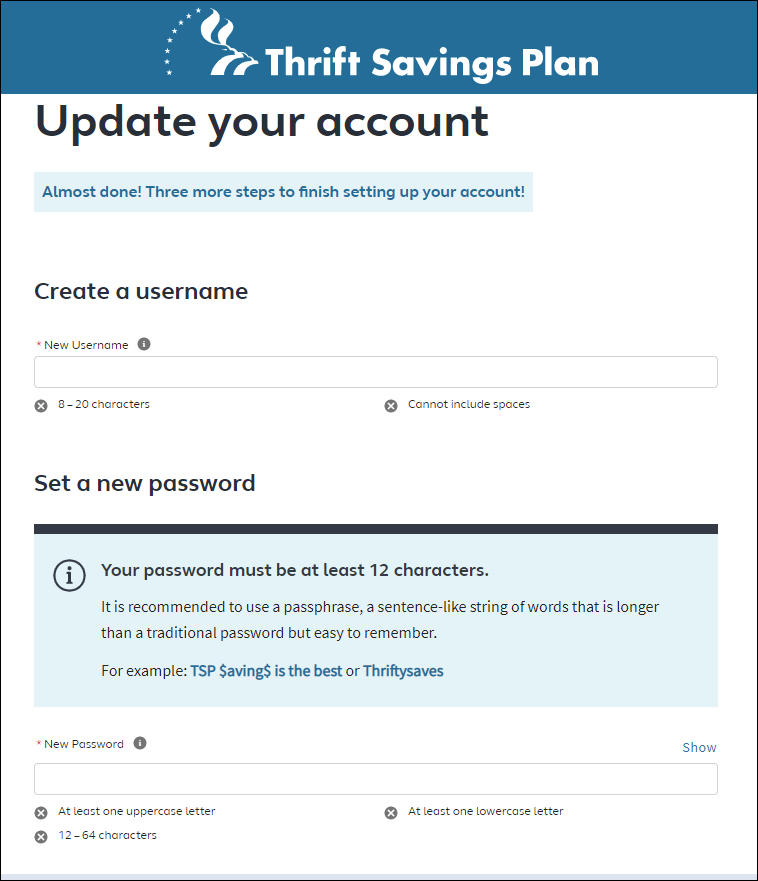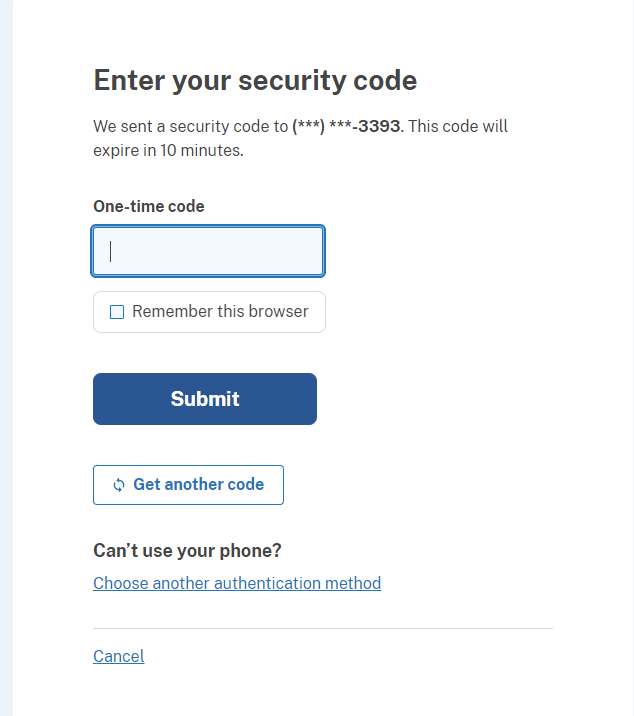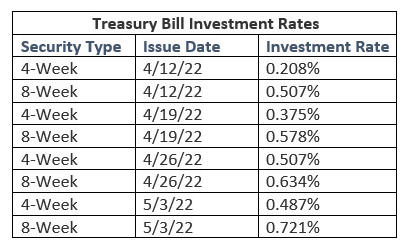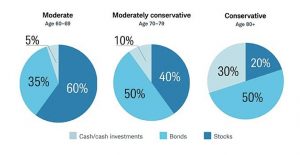Posted on Friday, 1st July 2022 by Dennis Damp
 Print This Post
Print This Post
Retirement account access is critical for those who need to change fund allocations, withdraw funds, add or change beneficiaries, or process other actions such as requesting an RMD. Many Thrift Savings Plan (TSP) account holders encountered major problems when trying to login to the new site. Some spent days working to regain access and were placed on hold with the TSP customer service staff for hours.

TSP SITE LAUNCH
Considering there are 6.6 million TSP participants with approximately $743 billion in assets, problems were inevitable with such a large undertaking.
Congresswoman Eleanor Holmes Norton requested a meeting with the TSP Executive Director to discuss the many problems account holders had and are still having with the new system. I was one of the lucky ones and gained access early and without incident. Many were able to get in with only minor issues, others weren’t so lucky, and questions still linger.
TSP FEATURES AND PROGRESS
The good news is that the TSP completely modernized this country’s largest retirement plan, we can now e-sign and upload documents, receive mobile push notifications, use their TSP mobile app and virtual assistant, and they added a mutual fund window allowing many participants to purchase mutual funds. They also added new security enhancements and wait times for customer service calls are decreasing.
After the bugs get worked out, hopefully sooner than later, we all will have more flexibility and options to manage our TSP accounts.
MUTUAL FUND WINDOW (MFW)
For those who want to diversify their investments, participants can transfer a portion of their Thrift Savings Plan account balance to a MFW account. Certain restrictions apply, Thousands of low-cost mutual funds are available for purchase.
- Investment Representatives are available from 7 a.m. to 9 p.m. ET, Monday through Friday by calling the ThriftLine at 877-968-3778 and choosing Mutual Fund Window Account from the menu.
RESEARCH REPORTS
Morningstar research reports are available for the MFW that include mutual fund quotes, detailed fund analysis, performance, portfolio composition and much more. I use Morningstar to monitor my stock and mutual fund portfolios. They are very useful and they provide a portfolio x-ray feature for their subscribers that identifies whether your investments are conservative or high risk.
MINIMUM BALANCE & TRANSFER REQUIREMENT
You can invest up to 25% of your savings plan in your MFW account. Your initial transfer into a MFW account must be $10,000 or more. This means that you are required to have a balance of $40,000 or more in your savings plan to open a MFW account. After your initial investment, there is no minimum for each individual transfer.
If you request a money transfer between your Thrift Savings Plan core investments and MFW Account by 12 p.m. ET, your funds will be available for trading in your MFW the next business day. Transfers requested after 12 p.m. ET are processed the following business day.
You can transfer money from your Thrift Savings Plan core funds into your Mutual Fund Window Account at any time, however, transfers in will count towards the two per month savings plan rules.
Although the amounts that you transfer into your MFW Account are included in the amount available for a loan or withdrawal under normal plan rules, you can’t borrow or withdraw directly from your MFW Account. In order to request a loan or withdrawal, you will need to transfer MFW funds back into the savings plan core investments first.
MFW FEES – Effective June 01, 2022
Mutual Funds Transaction Fees
- $28.75 Mutual Fund Purchases/Sales
- $28.75 Exchanges within the same fund family (charged on purchase only)
- $57.50 Exchanges between fund families ($28.75 charged on purchase and sale)
Account Fees
- $150 Annual Maintenance Fee
- $5 Duplicate Statement
Note: The $150 annual fee includes a $55 administrative fee designed to guarantee that the availability of the MFW will not indirectly increase the share of TSP administrative expenses borne by the participants who choose not to use the MFW.
The fees are higher when you factor in a mutual fund’s expense ratio that can range from less than .10% to 1% and higher. For example, if you transfer $10,000 to your mutual fund window, and elect to purchase $5,000 in XYZ mutual fund with an expense ratio of 1%, your cost to own this first mutual fund would be:
- $150 annual fee
- $28.75 purchase transaction fee
- $50 (1% XYZ expense ratio each year you own the mutual fund)
To set up your account and purchase your first mutual fund, the cost would be $228.75! Additional mutual fund purchases would cost $28.75 each plus their annual expense ratio. The expense ratio is deducted from each of your mutual funds the same way the TSP Funds handle their expense ratios. You would also pay a fee when you sell or exchange a mutual fund with another.
The $150 fee is paid annually plus any trading fees and the expense ratios that the mutual fund companies deduct from your investment each year.
COMPARING THE MFW TO A STANDARD BROKERAGE ACCOUNT
If you intend to transfer a good portion of your account into the MFW it may be cost advantageous to transfer those finds to an IRA at Fidelity, Vanguard or elsewhere. Costs would be lower in most cases. For example, my Fidelity brokerage retirement account doesn’t charge a setup fee and there are zero costs to purchase any of Fidelity’s mutual funds, individual stocks, and ETFs.
However, if I want to purchase a mutual fund from Vanguard there is a $75 fee which I paid because I use the Vanguard Wellesley Income Fund (VWINX) and other mutual funds as anchors in several portfolios. VWINX has an expense ratio of .24%, yields 2.55%, and has only decreased 16.4% as of 6/30/22, while the S&P is down 25% from its 52-week high. It is a managed fund and invests approximately 40% in equities and 60% in bonds, many of which are short term Treasury Bills. They currently hold 2.5% in cash.
SUMMARY
Overall, I’m satisfied with the new TSP website. I downloaded the historical reports I wanted to archive before they migrated to the new system as I suggested in my article titled, “CAUTION – PREPARE FOR THE TSP TRANSISTION.” The TSP warned users that our historical documents would not transfer to the new system. If you neglected to do this, request needed documents from the TSP; they will send them to you. The new design, menu structure, downloadable forms, e-document signing options and updated security features are what was needed to modernize the system.
The MFW is advantageous for those who wish to purchase a select group of funds and don’t want to open another retirement account. It is ideal for those who wish to purchase low cost highly rated mutual funds as the centerpiece of their account and intend to keep them for an extended period. Once you set up a group of funds targeted to your investment goals, you only have to rebalance annually or as needed.
Helpful Retirement Planning Tools
- Retirement Planning for Federal Employees & Annuitants
- The Ultimate Retirement Planning Guide – Start Now
- TSP Guide
- TSP Considerations
- Medicare Guide
- Medicare and FEHB Options – What Will You Do When You Turn 65? (Part 1)
- Budget Work Sheet
- Social Security Guide
Disclaimer: The information provided may not cover all aspect of unique or special circumstances, federal regulations, medical procedures, and benefit information are subject to change. To ensure the accuracy of this information, contact relevant parties for assistance including OPM’s retirement center. Over time, various dynamic economic factors relied upon as a basis for this article may change. The advice and strategies contained herein may not be suitable for your situation and this service is not affiliated with OPM or any federal entity. You should consult with a financial, medical or human resource professional where appropriate. Neither the publisher or author shall be liable for any loss or any other commercial damages, including but not limited to special, incidental, consequential, or other damages.
Tags: The Mutual Fund Window, TSP Site Access, TSP Site Launch
Posted in BENEFITS / INSURANCE, FINANCE / TIP, RETIREMENT CONCERNS, SURVIVOR INFORMATION
Comments (0)|  Print This Post
Print This Post

